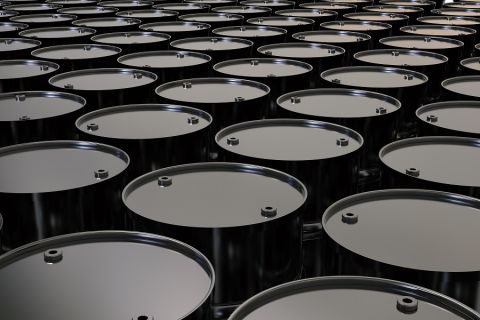Unconventional reservoir developments require enormous amounts of capital. Well spacing and stage spacing are the primary cost drivers in these developments, but stimulation effectiveness is often controlled by geologic factors in combination with the stimulation design. Although the relative importance of these factors remains uncertain, each issue can be addressed with high-quality microseismic monitoring and analysis.
Vertical borehole arrays have been the staple of the microseismic industry. Surface recording, however, offers distinct technical and cost advantages, particularly when an observation well would need to be worked over or drilled. Surface arrays provide uniform accuracy of the lateral fracture propagation along an entire horizontal well without measurement bias, provided the array has constant sensor density. Also, surface microseismic data allows reconstruction of how the rock broke in addition to where the fracture happened. These advantages contribute to more accurate and cost-effective inputs for optimal well-planning decisions.
Montney shale
The Montney is one of Canada’s most important developing unconventional reservoirs. It was deposited in a Triassic foreland basin and has maximum thicknesses in excess of 300 m (1,000 ft). In some places, its thickness allows development of multiple stratigraphic levels. The play produces dry gas to liquids, depending on location. The geologic character can be complex, with the structural overprint of the Rocky Mountain uplift, and a wide range of completion practices used in the wells can influence development results.
Because of the suite of variables at play, microseismic measurements are a key element of the planning and execution of a Montney development.

FIGURE 1. This composite shows the project location, treatment wells, and surface array over the local earth model. (Images courtesy of Spectraseis)
Fracture monitoring
Figure 1 shows the location of the treatment wells and the velocity model used for processing. The red dots are 200 high-sensitivity 3-C broadband sensors deployed by Spectraseis in an 11-sq-km (4.2-sq-mile) grid. The area is heavily forested, with topographic relief of several hundred meters, which favors a cable-free nodal acquisition system.
No new cut lines were required for access, so environmental and archeological approvals were obtained within a week. Even with Canada’s renowned winter weather – temperatures reaching -30°C (-20°F) and fewer than nine daylight hours – the grid was laid out in six days by a small crew of 10 technicians.
The two 1,800-m (5,905-ft) horizontal wells in Figure 1 are at depths of 2,000 and 2,200 m (6,562 and 7,220 ft). The upper and lower targets were stimulated with a zipper frac, alternating between the upper and lower zones. The operator’s plan called for the placement of 175 tons of sand in each interval, pumping as much water as required. The fluid volume required over the 15 stages ranged from 900 cu m to 1,500 cu m (7,545 bbl to 12,580 bbl).
The importance of shear waves
The use of broadband 3-C recording equipment was critical to the success of this program. Three-component recording and shear (S) analysis is standard procedure for borehole microseismic measurements, but the importance of S-wave data in achieving high-quality surface microseismic results has not been fully appreciated to date.

FIGURE 2. Microseismic arrival on one line of 3-C stations is perpendicular to the horizon tal well.
Figure 2 illustrates this with a characteristic example of a Montney event. The compressional (P)-wave arrival is an obvious hyperbola on the vertical component traces, with minimum travel time of 1.1 seconds. The S-wave arrival is most visible on the horizontal traces approximately 0.5 seconds later. The amplitude of the S-wave arrival is much stronger and has substantially lower frequency content than the P-wave arrival. A fracture event typically has 5 to 15 times the energy in its S wave relative to its P wave, making the S wave the more robust arrival.
Conventional reflection seismic equipment, with relatively rare exceptions, uses receivers designed and optimized for recording only the P wavefield, so much of the microseismic energy from a fracture monitoring program employing such equipment is simply not recorded. Three-C broadband sensors ensure that S-wave arrivals are not attenuated in the recordings.
Microseismic events from depth also must have a P-S arrival couplet, as seen in Figure 3, separated by a characteristic time dictated by depth and P-S velocity ratio. This is a powerful quality control attribute for eliminating false positives, which have been a disconcerting feature of many surface microseismic surveys to date.
Approximately 11,000 events identified in the recordings were processed using time-reverse imaging. About 95% of the events identified with the appropriate P-S couplet were confidently imaged. In addition to highly reliable locations, this migration technique produces images of the fracture radiation pattern, used to interpret the fracture source mechanism. In this case, the stimulation produced mostly tensile fractures, especially in the upper Montney interval.

FIGURE 3. An overhead view of event locations colored by stage is coordinated with colored perforation crosses.
Figure 3 shows the microseismic event locations for each well. The Upper Montney events are somewhat uniformly distributed in the areas adjacent to the perforations. The Lower Montney fracs are heavily affected by a set of preexisting north-south fractures. These fractures are primarily in the underlying Belloy formation, although they significantly affect the Lower Montney. More than 30% of the events caused by the lower well stimulation are below the Montney interval. Linear patterns in the event clouds provide fracture trends to be tied to 3-D seismic attributes and mapped into the undeveloped areas.
Figure 4 plots the radial distance (perforation to event location) vs. time for stage 4 in both wells with the frac pumping curves for reference. The r-t plots segregate the microseismic events into several populations. Different characteristics of the fractures can be interpreted from their location in the r-t space and in relation to which pumping activities created the fractures.
In the first frac stage in Figure 4, from the upper well, events begin only after initiation of proppant pumping, and event frequency increases with sand concentration. The next stage, from the lower well, had events that began immediately upon initiation of pumping the fluid-only pad. The lower well stage 4 frac appears to have activated a large preexisting fracture, while the upper well stage 4 frac does not show this influence.
A second population of weak events (open circles), further from the well, is attributed to pressure diffusion in the formation ahead of any moving fluid and sand.

FIGURE 4. In these distance-vs.-time plots and pumping curves for stage 4, events are colored by signal-to-noise ratio. Black curves segregate strong near-well and weak far-field populations, while colored regions separate fracture populations by pumping activity.
In Figure 4, fracture populations that have a greater chance to be propped are below the black curves. The green region is the fluid-only pump interval, which will contain fractures that were quickly opened before sand arrived. The yellow region contains events in the near-well area that were created during proppant pumping. Those in the far-field (blue) region and those occurring after pumping ended (red) likely received no proppant.

FIGURE 5. A 3-D grid mapping of microseismic events is colored by event attribute populations as defined in Figure 4. Only events from the green and yellow regions of Figure 4 are used for volumetric calculations.
Figure 5 shows a 3-D reservoir voxel volume from the mapped microseismicity, excluding those events in the blue and red domains in Figure 4. By including only the domain that is expected to be opened and propped, a better measure of the effective stimulated reservoir volume (ESRV) is computed. Moreover, the ESRV trends linearly with the volume of fluid pumped. Deviations from the trend indicate stages where either the preexisting fractures took the sand volume with reduced pumping effort or stages where the rock was more difficult to stimulate.
The effects of the two contrasting fracture systems on ultimate production and decline rate still need to be tied to longer-term production history, but the operator now has a reliable understanding of the differences in frac behavior locally for future development decisions in the Montney. Large fracture systems, as mapped during the lower well stimulation, can provide either a robust plumbing system for production or a path for water, depending upon local conditions. The I microseismic analysis in this case also has delivered a robust estimate of the reservoir volume being drained by each well, which is the first and most important estimate for determining well-by-well reserves.
Surface microseismic data will continue to grow in importance as drilling moves into areas without easy access to empty well bores. Of critical importance to the success of this project – and the very high-quality data recorded – were the survey geometry, the use of three-component broadband seismic sensors, good velocity control, and both acoustic and elastic processing capabilities.
The most valuable analysis step is always the interpretation and integration of microseismic results with engineering and geoscience information to generate insights into how a well stimulation program performed and why. Mapping and integrating these fracture trends with other subsurface data, such as 3-D seismic attributes, will help the operator predict reservoir areas prone to preexisting fracturing and alter their drilling plans to make use of, or avoid, these fractures with future wells.
Recommended Reading
US Leads Global Oil Production for Sixth Straight Year-EIA
2024-03-11 - The Energy Information Administration says it is unlikely that the record will be broken by another country in the near term.
What's Affecting Oil Prices This Week? (April 8, 2024)
2024-04-08 - Stratas Advisors says geopolitics are providing a boost for oil prices as conflicts escalate–and while crude oil and oil products continue to flow, the possibility of disruption is increasing.
Russia Orders Companies to Cut Oil Output to Meet OPEC+ Target
2024-03-25 - Russia plans to gradually ease the export cuts and focus on only reducing output.
Oil Dips as Demand Outlook Remains Uncertain
2024-02-20 - Oil prices fell on Feb. 20 with an uncertain outlook for global demand knocking value off crude futures contracts.
US Oil Stockpiles Surge as Prices Dip, Production Remains Elevated
2024-02-14 - EIA reported crude oil stocks increased by 12.8 MMbbl as February began, far outstripping expectations.


